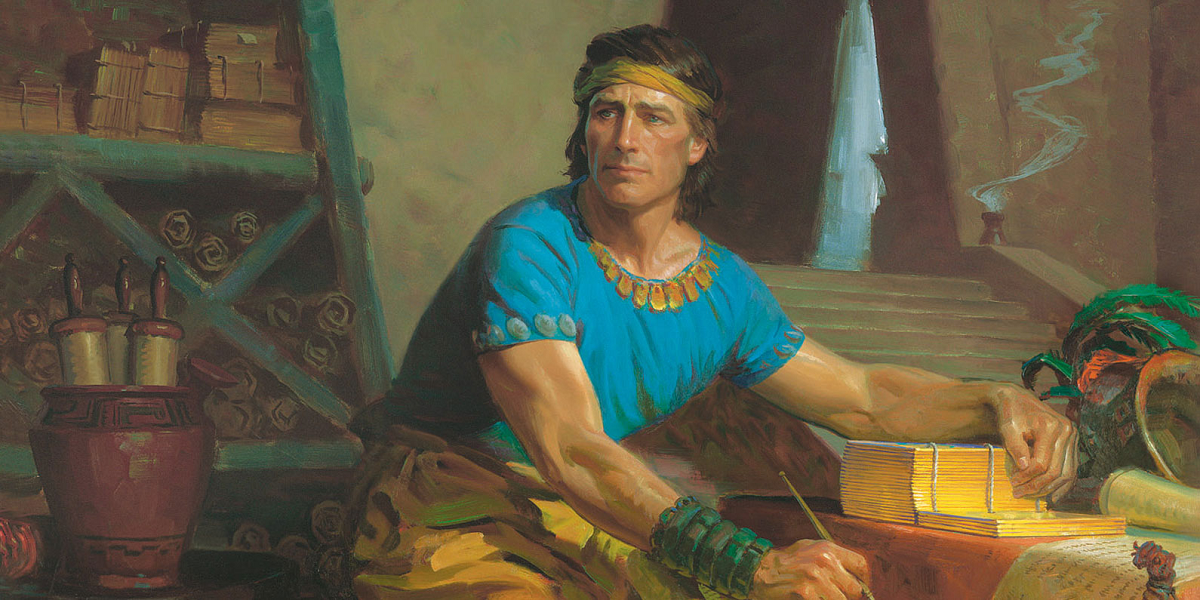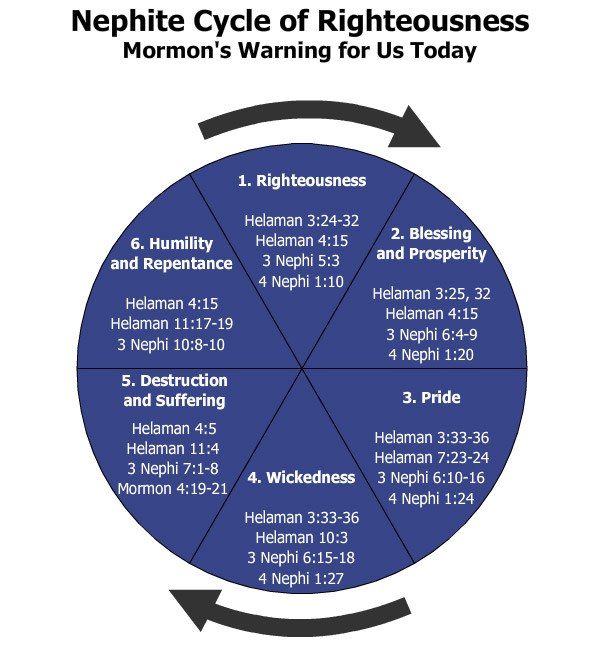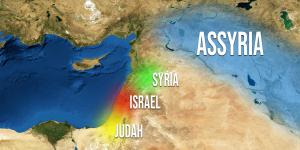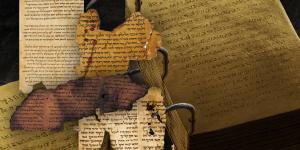You are here
How Does Chiasmus Teach Us to Reverse the Pride Cycle?

Alma 62:48-49
The Know
One way that the Book of Mormon provides a valuable view of history is that it records the spiritual condition of various peoples over the course of many generations. Mormon, as the primary abridger and editor of this lengthy record, was particularly aware of how the Nephites’ degree of pride or humility cycled over time.1 One of Mormon’s historical summaries stands out, in particular, because it emphasizes how the typical transition from receiving blessings to engaging in prideful behavior was avoided.2 This summary, found in Alma 62:48–51, uses a chiasm to emphasize this point:3
|
A And the people of Nephi began to prosper again in the land, |
||||
|
|
B and began to multiply and to wax exceedingly strong again in the land. |
|||
|
|
|
C And they began to grow exceedingly rich. But notwithstanding their riches, or their strength, or their prosperity, |
||
|
|
|
|
D (a) they were not lifted up in the pride of their eyes; |
|
|
|
|
|
|
(b) neither were they slow to remember the Lord their God; |
|
|
|
|
D’ (a) but they did humble themselves exceedingly before him. |
|
|
|
|
|
|
(b) Yea, they did remember how great things the Lord had done for them, |
|
|
|
C’ that he had delivered them from death, and from bonds, and from prisons, and from all manner of afflictions, and he had delivered them out of the hands of their enemies. And they did pray unto the Lord their God continually, insomuch that the Lord did bless them, according to his word, |
||
|
|
B’ so that they did wax strong and |
|||
|
A’ prosper in the land. |
||||
While the outer layers of this chiasm concern the prosperity that the people were experiencing, the central elements (D and D’) emphasize what the people did to avoid the pride that usually follows such prosperity. In each central element, the concept of being humble or “not lifted up” is coupled with the people’s remembrance of God’s blessings, suggesting a direct relationship between these concepts.4
Notably, this chiasm alludes to words in Lehi’s famous prophecy about prosperity, which were picked up on by other Nephite prophets and repeatedly expressed throughout the Book of Mormon.5 As the following chart demonstrates, in many of these restatements the concepts of remembering or forgetting are directly related to prospering in the land or being cut off from the Lord’s blessings.
|
“And now, my sons, I would that ye should remember to search [the scriptures] diligently, that ye may profit thereby; and I would that ye should keep the commandments of God, that ye may prosper in the land according to the promises which the Lord made unto our fathers.” |
|
|
“Behold, do ye not remember the words which he spake unto Lehi, saying that: Inasmuch as ye shall keep my commandments, ye shall prosper in the land? … Now I would that ye should remember, that inasmuch as the Lamanites have not kept the commandments of God, they have been cut off from the presence of the Lord." |
|
|
"O remember, remember, my son Helaman, how strict are the commandments of God. And he said: If ye will keep my commandments ye shall prosper in the land—but if ye keep not his commandments ye shall be cut off from his presence." |
|
|
"Blessed art thou and thy children; and they shall be blessed, inasmuch as they shall keep my commandments they shall prosper in the land. But remember, inasmuch as they will not keep my commandments they shall be cut off from the presence of the Lord." |
Readers should also be aware that the inner and outer sections of the chiastic structure found in Alma 62:48–51 closely mirrors the same inner/outer sections in the famous chiastic masterpiece found in Alma 36:6
|
|
||
|---|---|---|
|
Outer Element (First) |
62:48. "And the people of Nephi began to prosper again in the land, and began to multiply and to wax exceedingly strong again in the land." |
36:1. "My son, give ear to my words; for I swear unto you, that inasmuch as ye shall keep the commandments of God ye shall prosper in the land." |
|
Inner Element (First) |
62:49. "they were not lifted up in the pride of their eyes; neither were they slow to remember the Lord their God" |
36:17. "I remembered also to have heard my father prophesy unto the people concerning the coming of one Jesus Christ, a Son of God, to atone for the sins of the world." |
|
Inner Element (Last) |
62:50. "Yea, they did remember how great things the Lord had done for them, that he had delivered them from death" |
36:18. "Now, as my mind caught hold upon this thought, I cried within my heart: O Jesus, thou Son of God, have mercy on me, who am in the gall of bitterness, and am encircled about by the everlasting chains of death."
19. "And now, behold, when I thought this, I could remember my pains no more;" |
|
Outer Element (Last) |
62:51. "And they did pray unto the Lord their God continually, insomuch that the Lord did bless them, according to his word, so that they did wax strong and prosper in the land." |
36:30. "But behold, my son, this is not all; for ye ought to know as I do know, that inasmuch as ye shall keep the commandments of God ye shall prosper in the land;" |
The Why
The way that the chiasm in Alma 62:48–51 connects to other passages that discuss Lehi’s promise of prosperity, as well as its shared inner/outer elements with Alma 36, suggests that its structure is both sophisticated and intentional. Recognizing a chiastic structure focuses our attention on words and key themes that their writers wanted us to note in particular. This helps us better understand the original intent of the Book of Mormon’s authors, which we otherwise might not have absorbed so completely.7
Chiasmus can also emphasize a reversal. At the turning point, the text reaches a climax or pinnacle and from that point it reverses its path and returns to the point of departure. In the process of this thought pattern, the reader is able to see the original idea in a new light. In this way, chiasmus helps listeners to turn around and go in a better direction. A famous chiastic proverb says, “Those who fail to prepare, prepare to fail.” This saying has power precisely because it stops people in their tracks and turns them around.
Typically, the Nephites experienced pride, wickedness, and destruction after periods of righteousness and blessings. In this instance, however, remembering the Lord helped them avoid this negative cycle. They steadily increased in both righteousness and prosperity, without having to be humbled first by war, famine, or some other type of destruction. The underlying chiastic structure in Alma 62:48–51 helps readers to similarly stop their regression deeper into the pride cycle and reverse that course headed to disaster. It shows how remembering the Lord—particularly the way He has blessed us—can help us retain humility in times of prosperity, just as the Nephites did.
Readers today can learn much from this chiastic message. While there is still much poverty in the world, many societies have been blessed beyond anything that previous generations have known. Technology and science have led to advances in food production, medicine, communication, transportation, health practices, and many other unprecedented blessings.
If we are not careful, however, we will face the same types of humbling tragedies recorded in the Book of Mormon. As Elder Joseph B. Wirthlin has taught, “There is something about prosperity that brings out the worst in some people.”8 Fortunately, the chiasm in Alma 62:48–51 shows that remembering the Lord and keeping his commandments brings out the best in people, even in times of great prosperity. By entering into sacred covenants to remember the Savior,9 and then by keeping those covenants, we can remain humble and grateful, even during the most prosperous of times.
Further Reading
Gerrit W. Gong, “Always Remember Him,” Ensign, May2016, online at lds.org.
Joseph B. Wirthlin, “Journey to Higher Ground,” Ensign, November 2005, online at lds.org.
Louis Midgley, “To Remember and Keep: On the Book of Mormon as an Ancient Book,” in The Disciple as Scholar: Essays on Scripture and the Ancient World in Honor of Richard Lloyd Anderson, ed. Stephen D. Ricks, Donald W. Parry, and Andrew H. Hedges (Provo, UT: FARMS, 2000), 95–137.
- 1. See Book of Mormon Central, “Why Did the ‘Pride Cycle’ Destroy the Nephite Nation? (3 Nephi 16:10),” KnoWhy 195 (September 26, 2016).
- 2. Although Mormon was certainly responsible for recording this historical summary in the Book of Mormon, it is not clear whether or not he was its original author.
- 3. For another example of the Book of Mormon’s use of chiasmus in its summaries of historical content, see Book of Mormon Central, “Why Was Chiasmus Used in Nephite Record Keeping? (Helaman 6:10),” KnoWhy 177 (August 31, 2016).
- 4. Throughout the Bible and Book of Mormon, the concept of remembrance is often associated with keeping the commandments. See Book of Mormon Central, “Why Did Helaman Want His Sons to Remember to Build upon the Rock? (Helaman 5:12),” KnoWhy 332 (June 28, 2017); Louis Midgley, “To Remember and Keep: On the Book of Mormon as an Ancient Book,” in The Disciple as Scholar: Essays on Scripture and the Ancient World in Honor of Richard Lloyd Anderson, ed. Stephen D. Ricks, Donald W. Parry, and Andrew H. Hedges (Provo, UT: FARMS, 2000), 95–137; Louis Midgley, “The Ways of Remembrance,” in Rediscovering the Book of Mormon: Insights You May Have Missed Before, ed. John L. Sorenson and Melvin J. Thorne (Salt Lake City and Provo, UT: Deseret Book and FARMS, 1991), 168–176; Louis Midgley, “‘O Man, Remember, and Perish Not’ (Mosiah 4:30),” in Reexploring the Book of Mormon: A Decade of New Research, ed. John W. Welch (Salt Lake City and Provo, UT: Deseret Book and FARMS, 1992), 127–129.
- 5. See Book of Mormon Central, “What does it Mean to ‘Prosper in the Land’? (Alma 9:13),” KnoWhy 116 (June 7, 2016); Book of Mormon Central, “How Is Prosperity Defined in Nephi’s Small Plates? (Words of Mormon 1:6),” KnoWhy 383 (November 21, 2017).
- 6. See Book of Mormon Central, “Why Was Alma Converted? (Alma 36:21),” KnoWhy 144 (July 15, 2016).
- 7. For further examples of how chiasmus can helps us better understand the Book of Mormon, see Book of Mormon Central, “What Can We Learn from 10 of the Best Chiasms in the Book of Mormon? Part 1,” KnoWhy 349 (August 7, 2017); Book of Mormon Central, “What Can We Learn from 10 of the Best Chiasms in the Book of Mormon? Part 2,” KnoWhy 352 (August 14, 2017); Book of Mormon Central, “What Can We Learn from 10 of the Best Chiasms in the Book of Mormon? Part 3 (Alma 36:18),” KnoWhy 355 (August 20, 2017).
- 8. Joseph B. Wirthlin, “Journey to Higher Ground,” Ensign, November 2005, online at lds.org.
- 9. See Book of Mormon Central, “At Baptism, What Do We Covenant to Do? (Mosiah 18:10),” KnoWhy 97 (March 11, 2016). See also, Gerrit W. Gong, “Always Remember Him,” Ensign, May2016, online at lds.org.
KnoWhy Citation
Related KnoWhys
Subscribe
Get the latest updates on Book of Mormon topics and research for free






